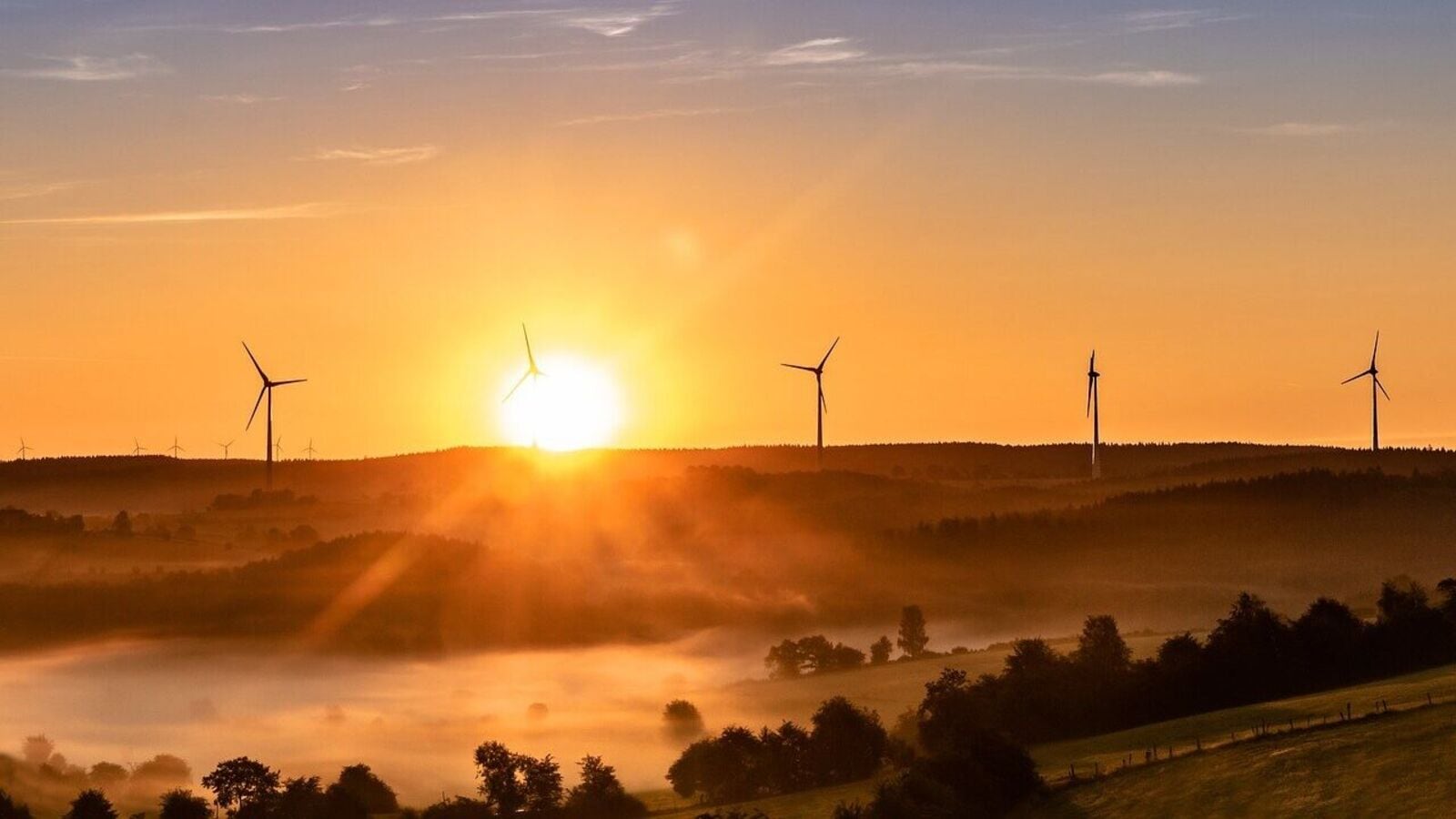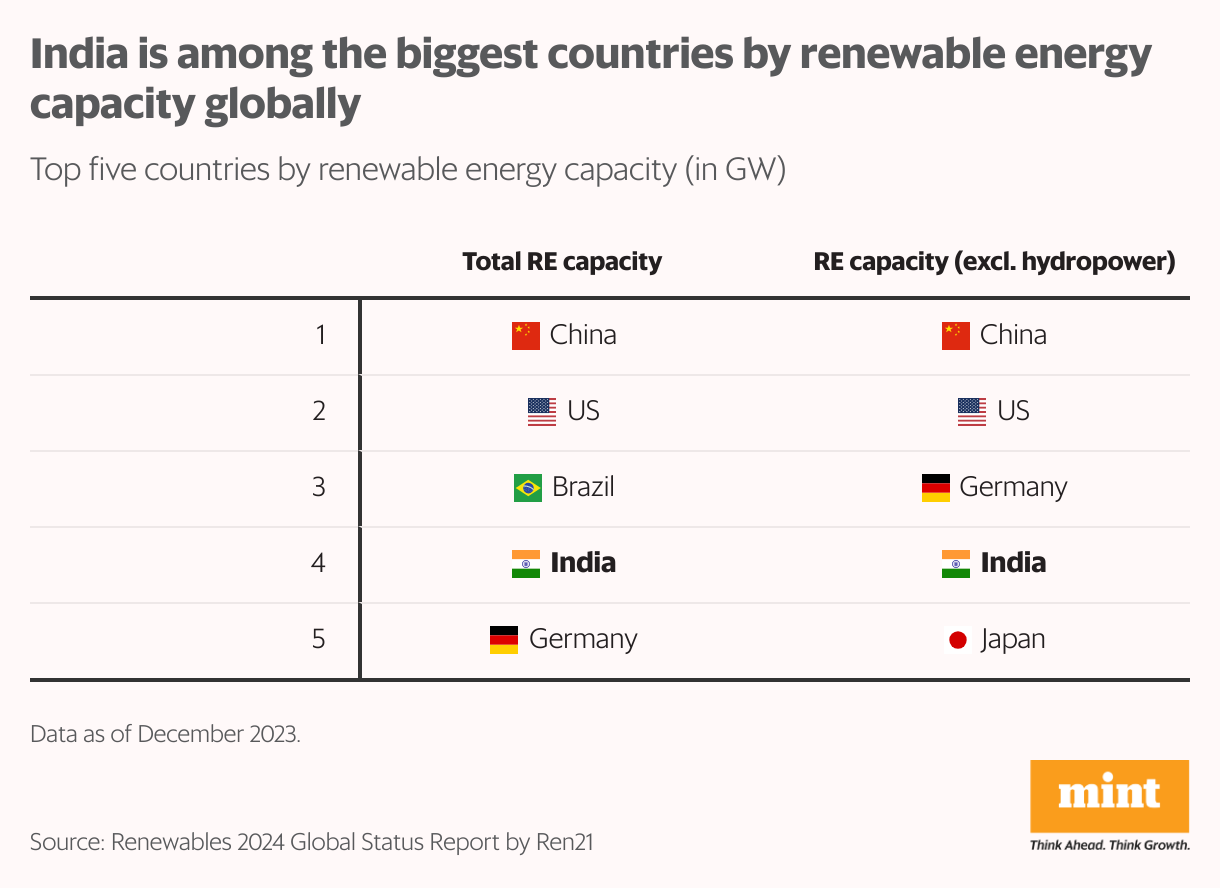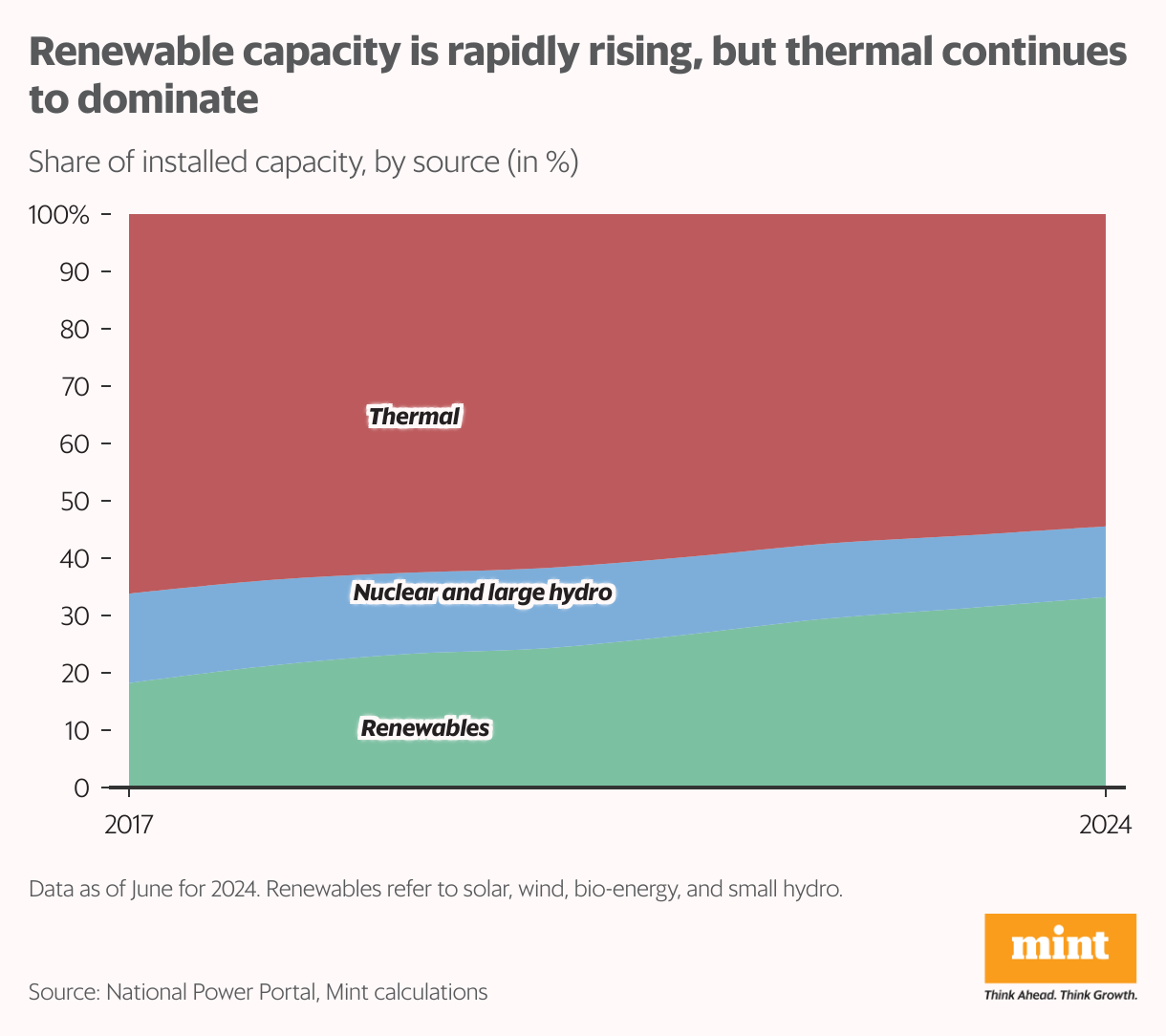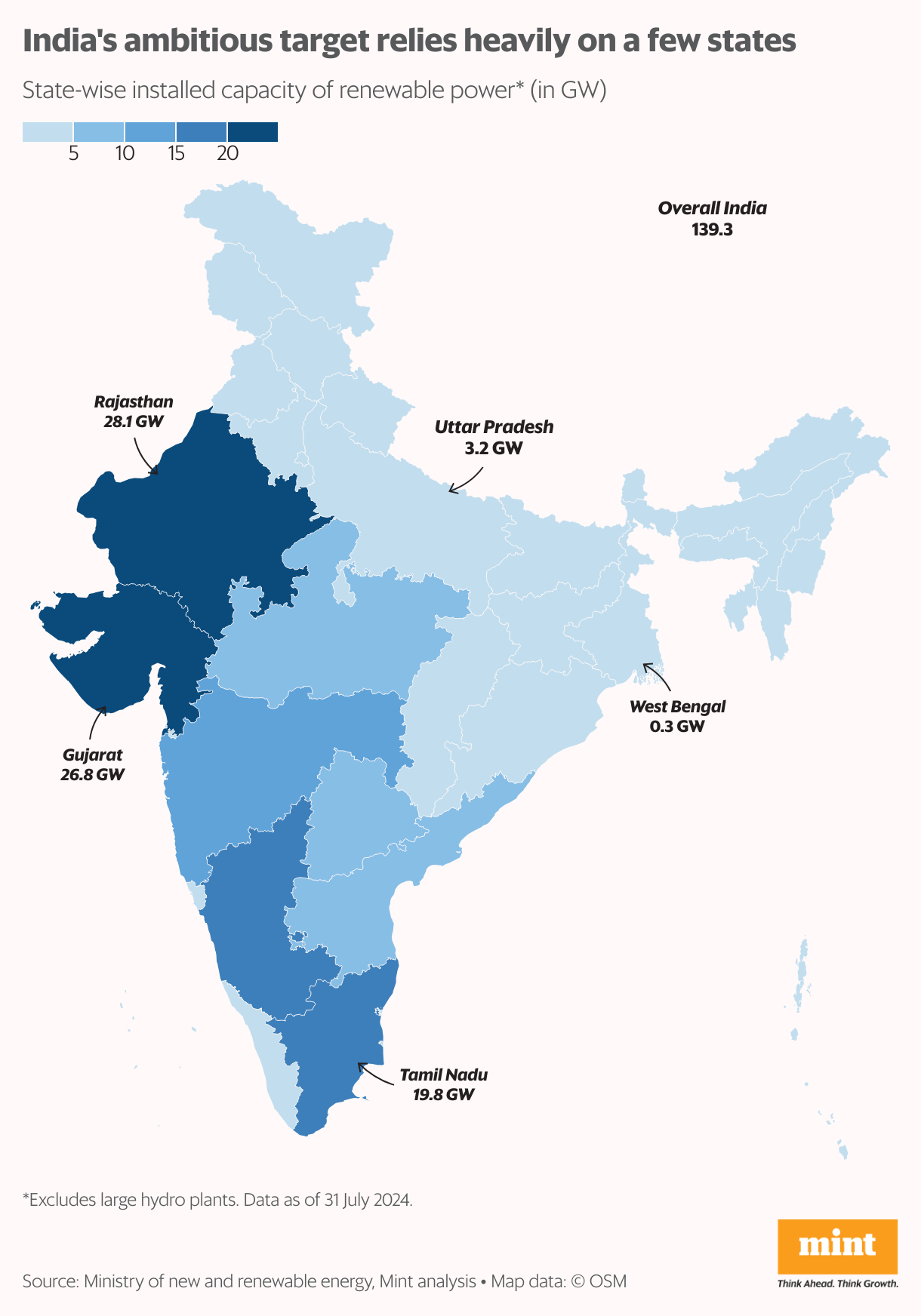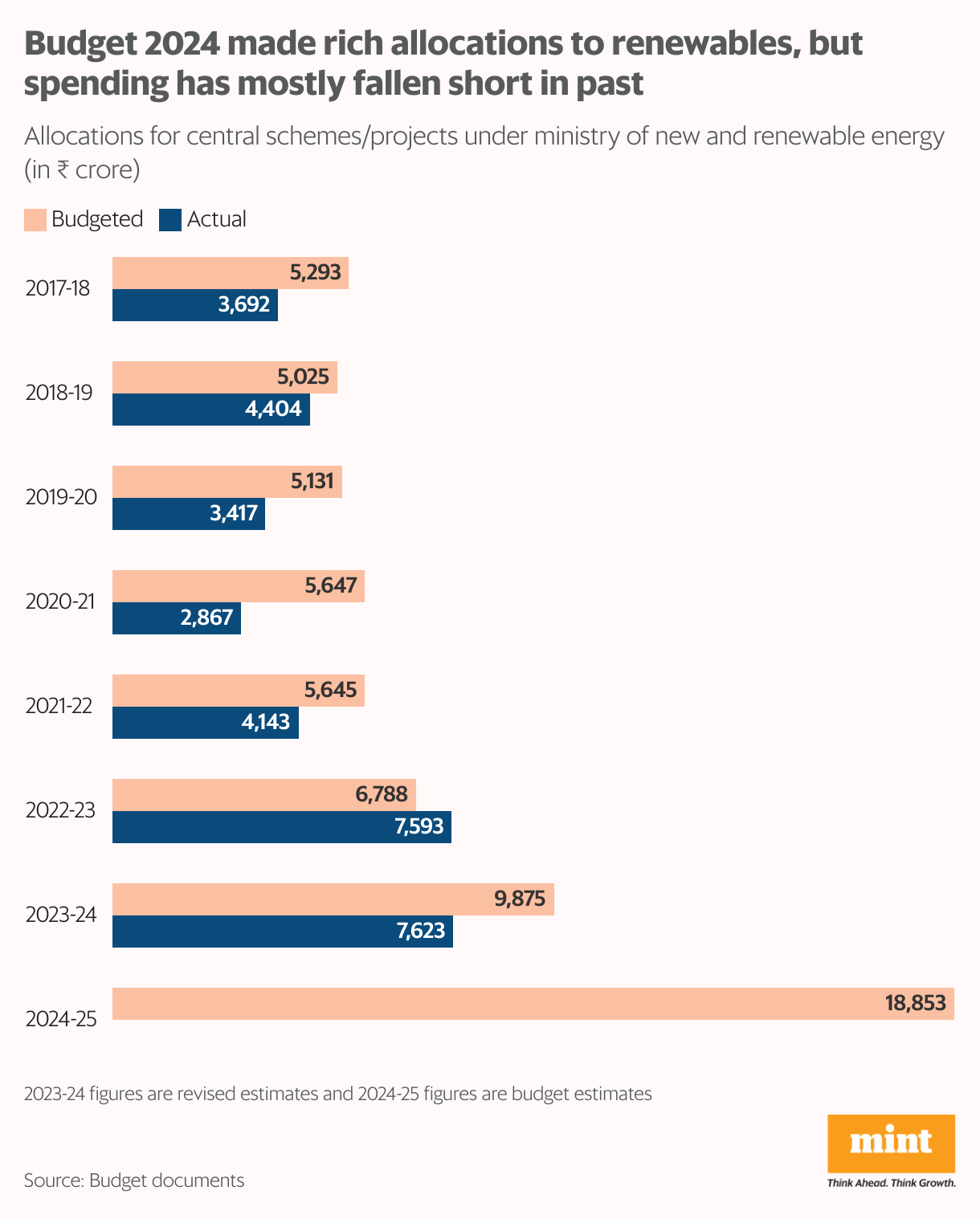On August 15, Prime Minister Narendra Modi reaffirmed India’s ambitious goal of achieving 500 gigawatts (GW) of non-fossil fuel-based power capacity by 2030, encompassing renewables such as solar, wind, biomass, and small-scale hydropower, in addition to nuclear and large-scale hydropower. Although the country fell short of its previous target of 175 GW of renewables by 2022, recent developments suggest that India may still have a chance of achieving this goal.
To meet this target, India needs to add an average of 46 GW of capacity annually through 2030 – a formidable task given the pace of recent years. However, the outlook is improving. In the first six months of 2024 alone, India added 15 GW, matching the entire additional capacity in 2023. The government is also stepping up efforts, aiming to call for bids for an additional 50 GW of capacity annually through 2027-28. If this momentum continues, India would be just in time to hit the 500 GW mark by 2030, given that renewable energy projects typically take up to two years to come online.
According to the Energy Finance Centre, an initiative of the Energy, Environment and Water Council, around 95% of the 2023-24 bidding path target has been met, although only 47% of bids resulted in successful auctions.
Read this | Green Revolution 2.0: Why India needs an integrated energy policy
Meanwhile, India maintains its position as the world’s fourth-largest country in renewable energy capacity, behind only China and Brazil among emerging economies, excluding hydropower plants.
Read also: Rooftop eclipse of India’s solar ambitions
Transition on the tightrope
India also aims to supply half of its power capacity with renewables by 2030, a goal that is supported by encouraging progress. Thermal power (which relies heavily on coal-fired plants) now accounts for a 55% share of India’s total capacity, down from 66% in 2017, while renewable energy’s share has risen from 18% to 33%. But while India’s renewables sector is growing rapidly, its increasing energy demands as a developing economy often drive it back to coal.
According to the Global Energy Monitor, India already has 240 GW of coal-fired power capacity in operation and 97 GW is under development. Earlier this year, the Ministry of Power told Reuters India would begin operating new coal-fired power plants totalling up to 13.9 GW this year, the largest addition in six years. At COP28 last year, India and China held back from committing to triple global renewable energy capacity by 2030 as the pledge called for a phase-out of coal power.
State Pioneers
While India is pursuing ambitious targets as part of its climate pact on the global stage, only a handful of major states are leading the way in this commitment. In July, Rajasthan and Gujarat were leading the way with 28 GW and 27 GW of installed renewable capacity, respectively, followed by Tamil Nadu (20 GW), Karnataka (17 GW), Maharashtra (13 GW), Andhra Pradesh (9 GW) and Madhya Pradesh (7 GW). The government has announced transmission plans to integrate 66.5 GW of renewable power generation in these states, with projects in various stages. State-owned Solar Energy Corp. of India Ltd has identified potential zones in eight states for the addition of 181.5 GW.
Meanwhile, progress by segment within renewables will also need to be watched: solar has led the push so far, although a parliamentary committee blamed low installation rates in the solar rooftop sub-segment and wind power component for India’s failure to meet its 2022 target.
Read this | Real costs: Why solar and wind are not yet market winners
Green budget
The Union Budget plays a crucial role in setting the tone for clean energy acceleration every year. In line with this commitment, the 2024-25 Budget saw one of the largest and significant allocations for central schemes and projects under the Ministry of New and Renewable Energy, allocating ₹18,853 crore will be allocated for renewable energy initiatives, a 90% increase over the previous year and a 147% jump over the revised estimates for 2023-24.
This significant budget increase may highlight the government’s dedication, but a look at historical data reveals a worrying trend. Actual spending has often been lower than budgeted amounts in recent years, with 2022-23 being a notable exception.
As India pursues its ambitious target of 500 GW of non-fossil fuel-based energy by 2030, success will depend on developing a balanced green grid, advancing research and development, and Moving away from coalDespite rising budgets and steady progress, these challenges need to be addressed quickly to shape India’s renewable energy future.
Disclaimer:
The information contained in this post is for general information purposes only. We make no representations or warranties of any kind, express or implied, about the completeness, accuracy, reliability, suitability or availability with respect to the website or the information, products, services, or related graphics contained on the post for any purpose.
We respect the intellectual property rights of content creators. If you are the owner of any material featured on our website and have concerns about its use, please contact us. We are committed to addressing any copyright issues promptly and will remove any material within 2 days of receiving a request from the rightful owner.

